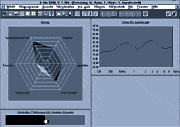While at a stoplight, the sound system-on-wheels next to me is pumping with such intensity that the vibrations cause my MP3 player to rattle in the plastic cup holder. A quick glance gives me a view of a likely future patient, and my thoughts turn to a mother who called me to ask whether her teenage daughter, a cochlear implant user, could use a personal audio device.
As an audiologist, I often address questions from parents, cochlear implant users, teachers, and professionals about connecting to personal listening devices for entertainment and education. Cochlear implant users have a variety of options:

Audio Headphones. The most convenient way to connect to a personal listening device, television, home stereo, computer, and gaming console is with headphones. Headphones should be placed over the microphone which may vary in location depending on the device and user preference (Figure 1). Some cochlear implant users may utilize a T-Mic, a microphone at the tip of the earhook, which allows for typical positioning of the headphones (Figure 2). However, most can use headphones by placing the headphones over the microphone.

FIGURE 2. Advanced Bionics’ Auria with T-Mic earhook.
|
Direct Connect. Through the use of standard patch cables, cochlear implant users can easily connect to audio products such as MP3 and CD players (Figure 3). When connecting with patch cables, optimal sound quality is achieved when the correct stereo plug is used. Depending on the size (3.5 mm or 2.5 mm) and type (stereo or mono) of plug used, an adapter may be required. It is important to seek advice from the cochlear implant audiologist prior to directly connecting any external device directly to the cochlear implant.
FM. The days of relegating FM systems solely to pediatric classrooms are in the past. Today, FM systems are spotted on teens and adults with hearing loss from board-rooms to concert halls. Cochlear implant users can take advantage of FM systems as well. Depending on the FM system and speech processor, a connecting piece of equipment or cable may be required. Wireless FM options are also available.
As the light turns green and the pulsating vehicle screeches ahead of me, I am reminded of the importance and value of music. I am eager to hear which connecting option the teenage girl chose. From low-tech to high-tech, cochlear implant users can now easily link to a variety of audio players for optimal listening.

|
Correspondence can be addressed to HR or Edie Gibson, AuD, email: [email protected].





